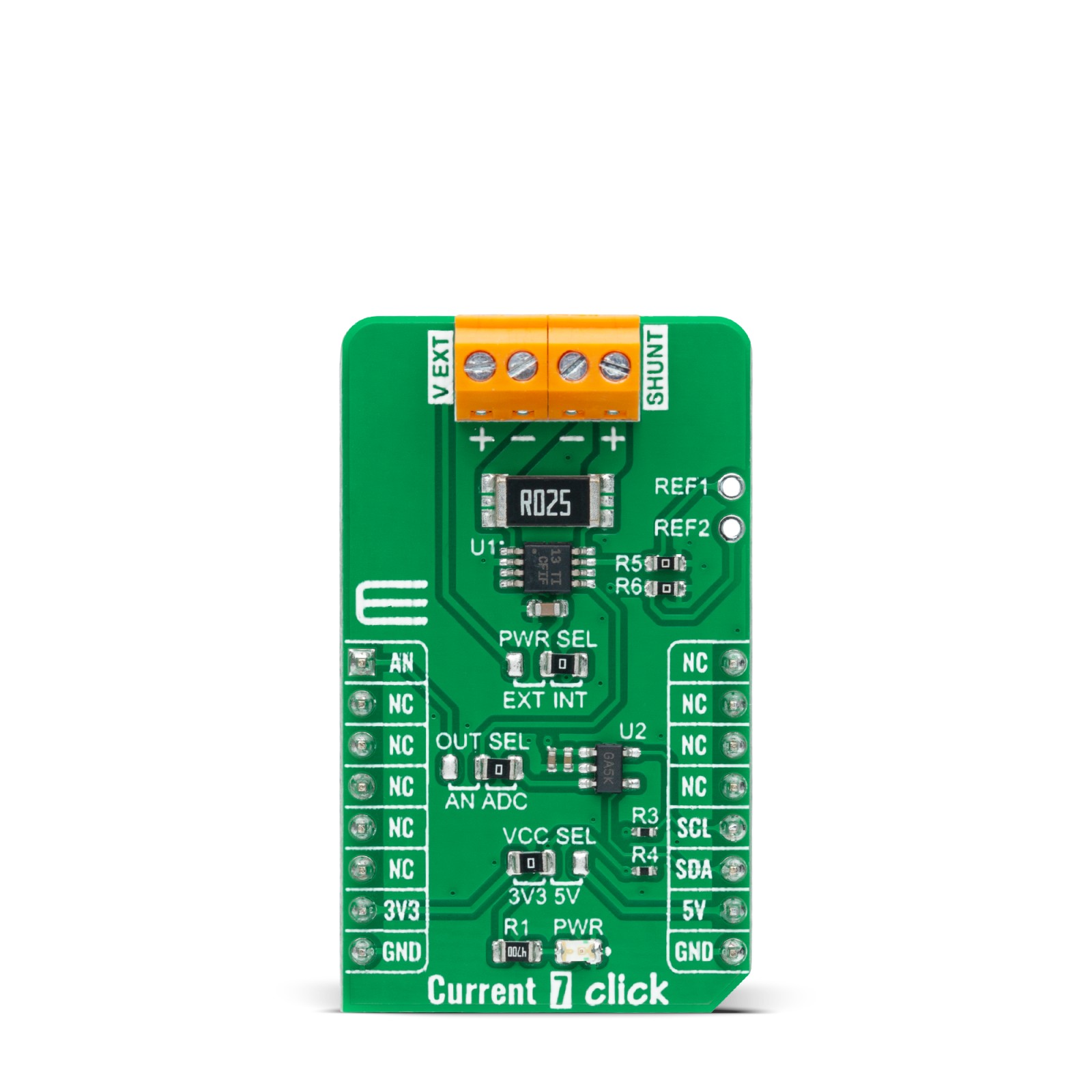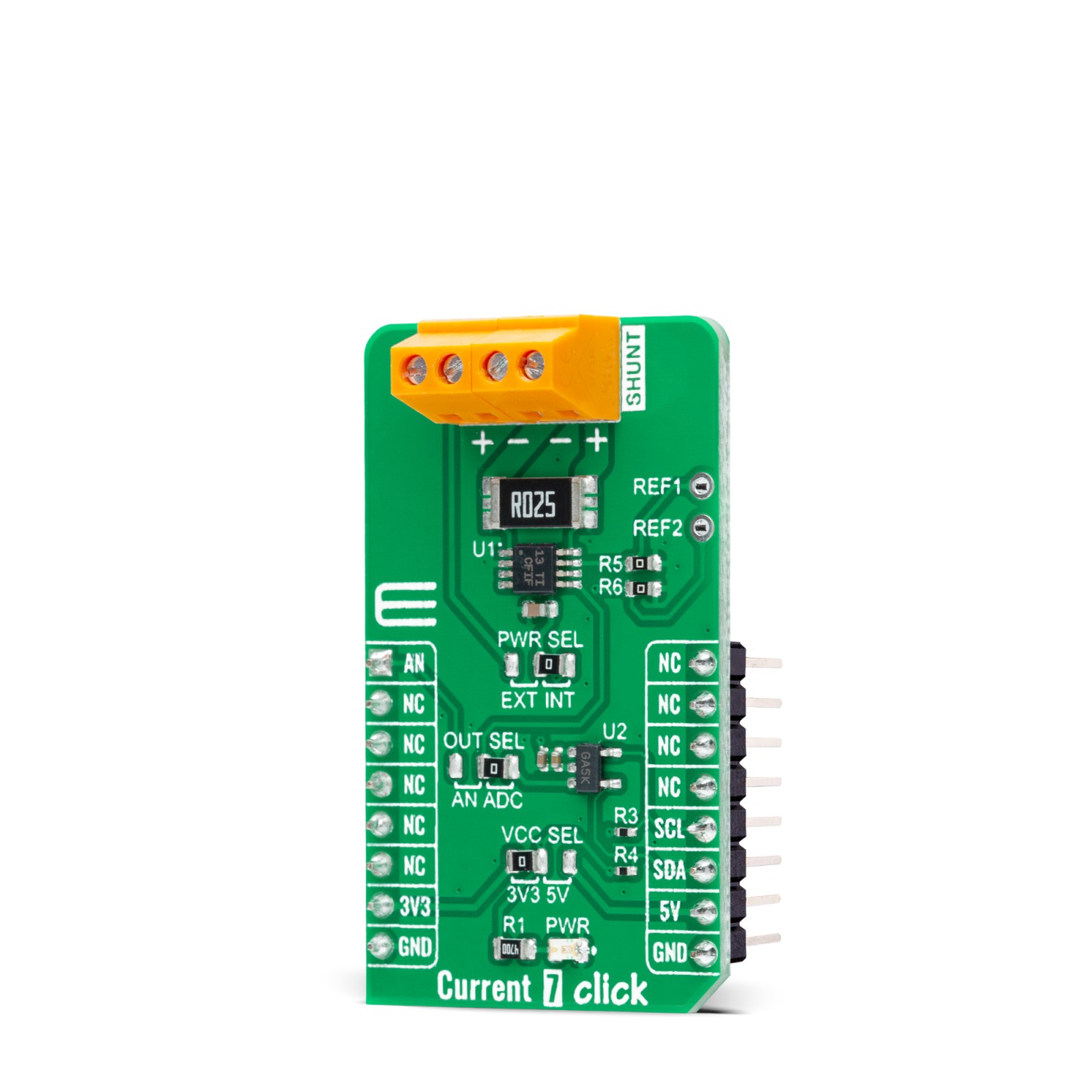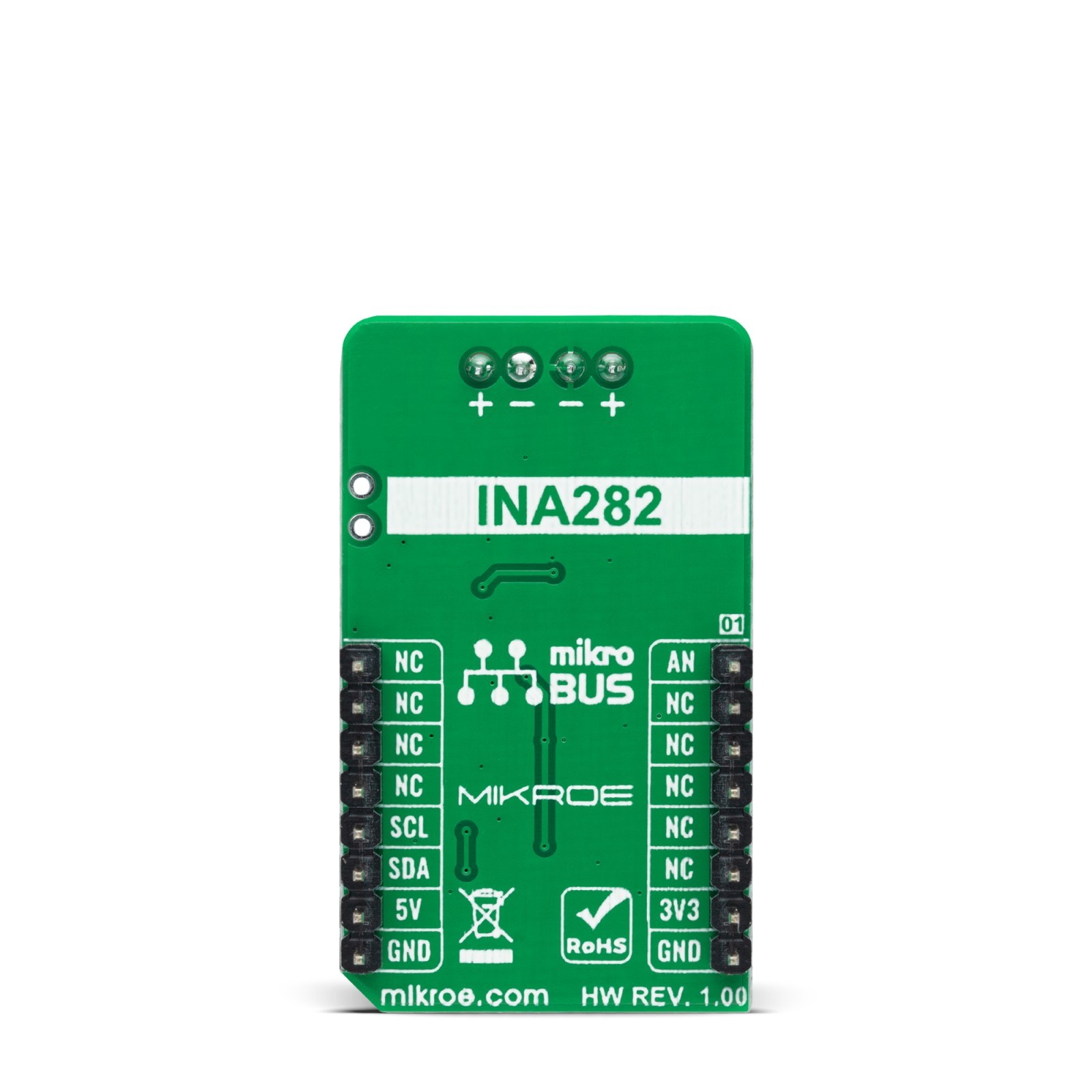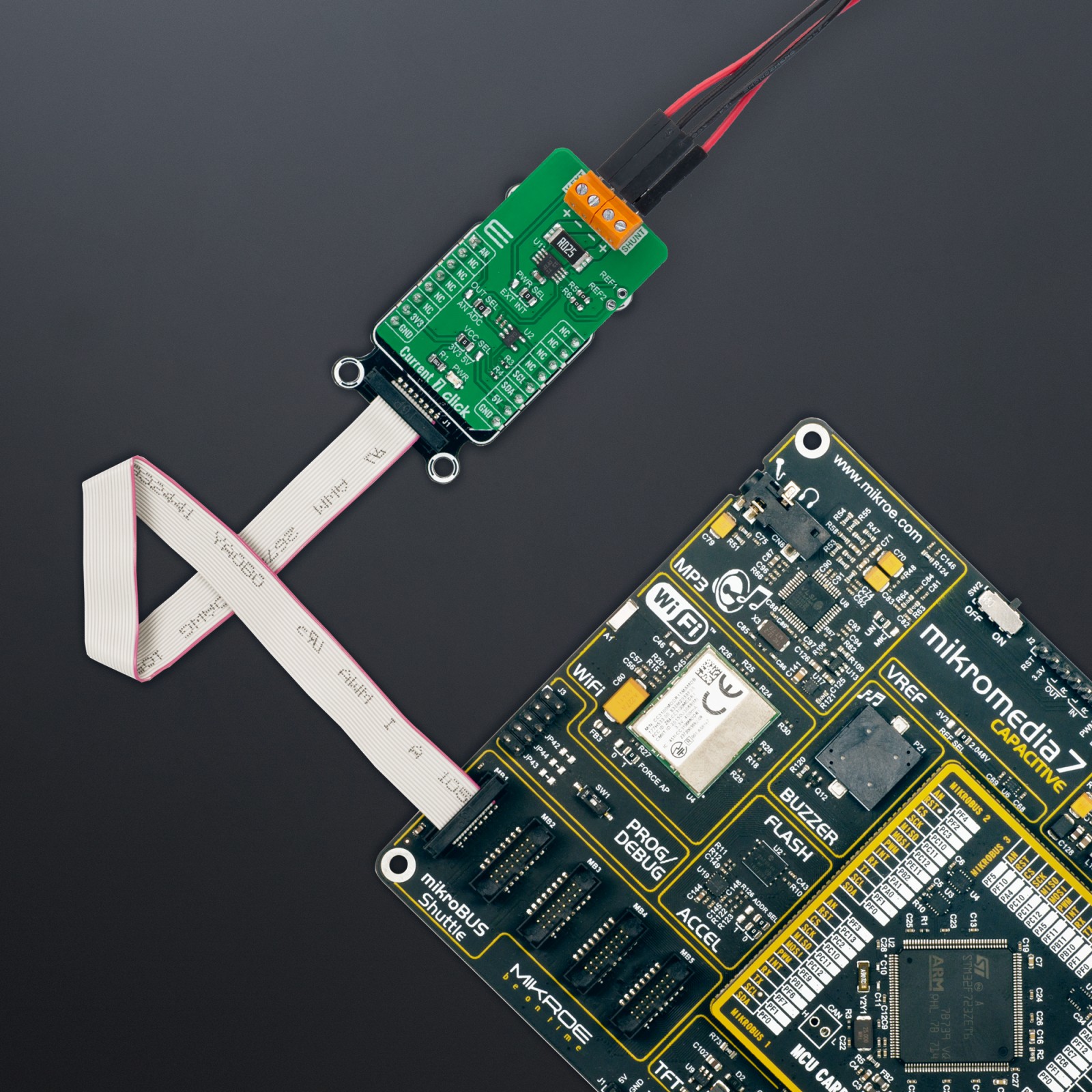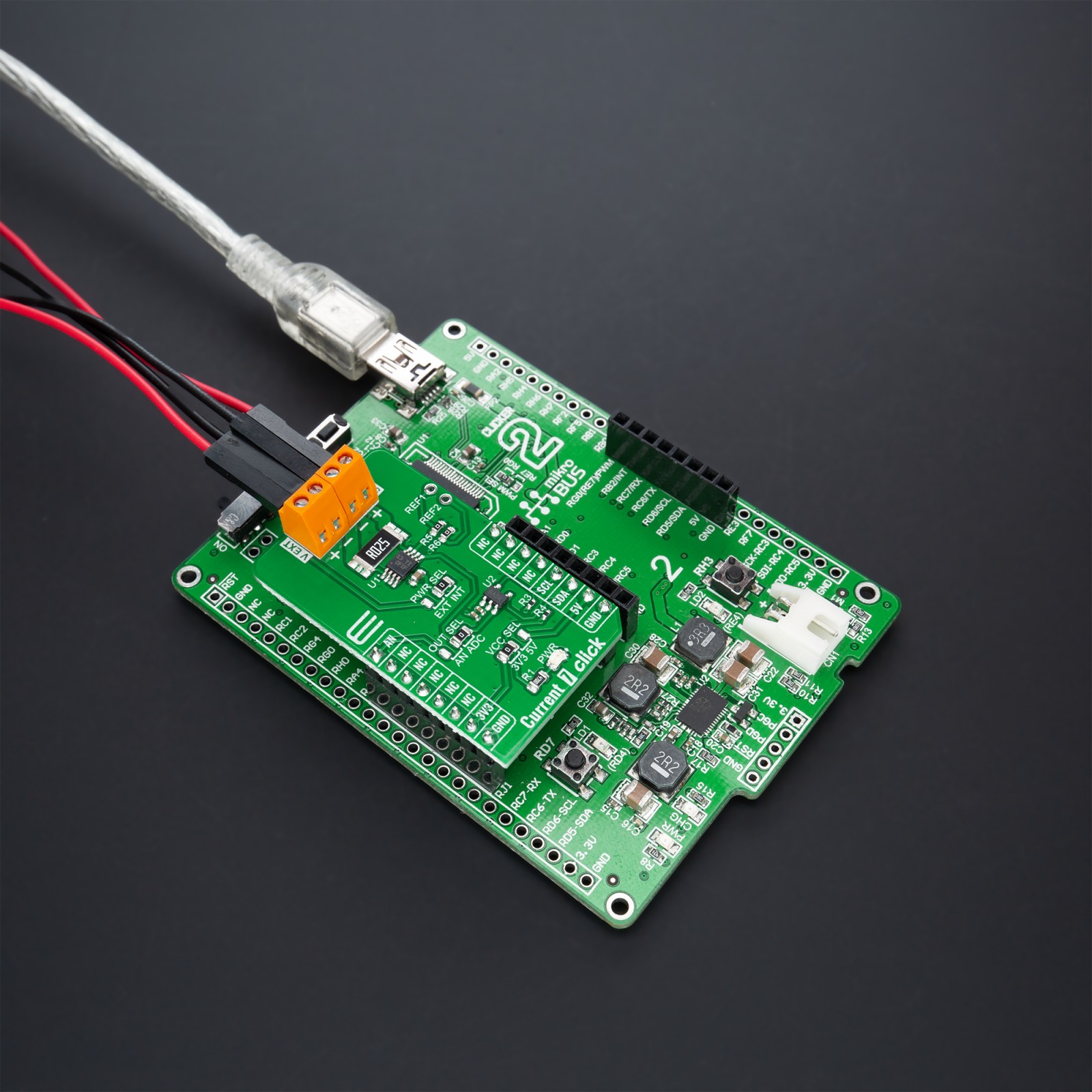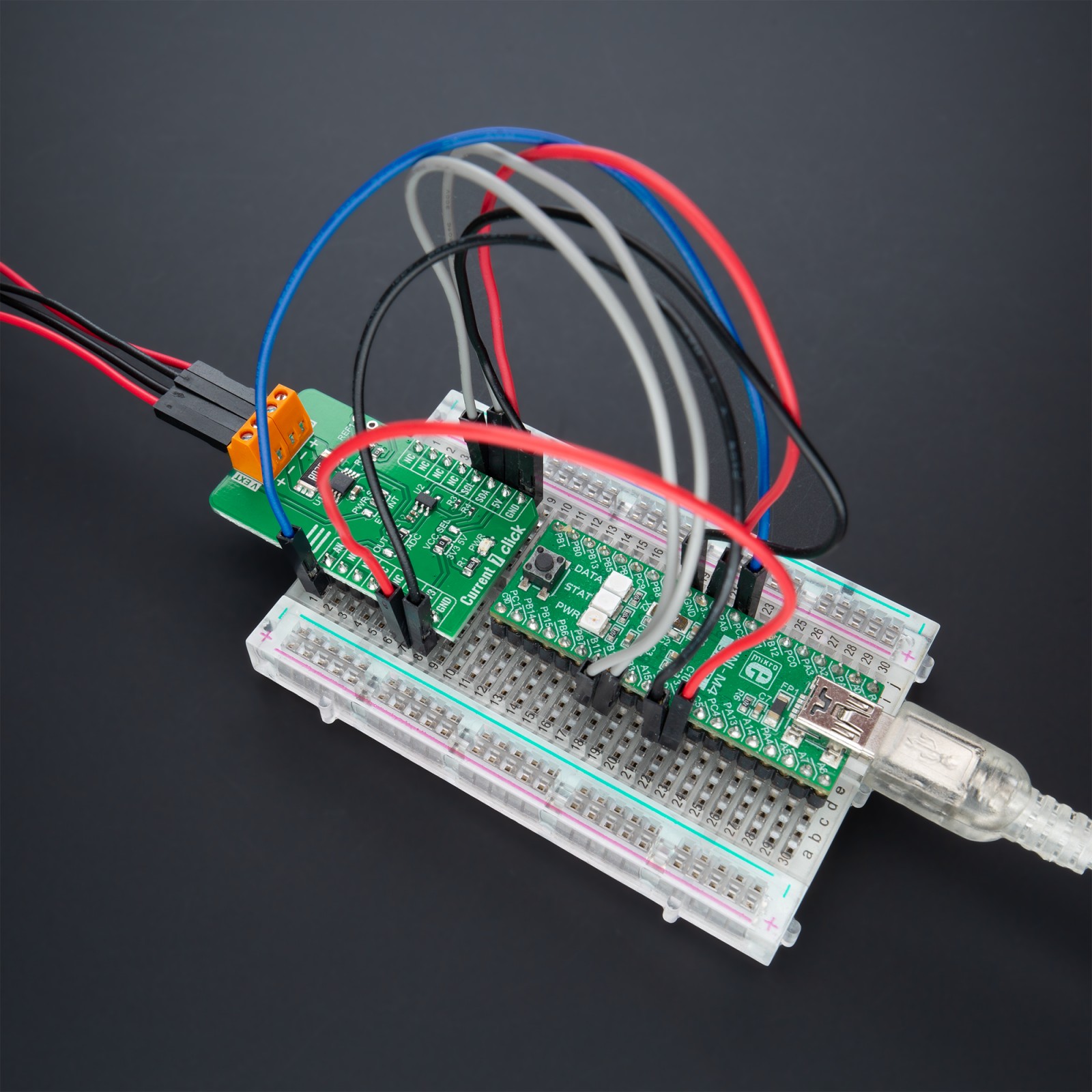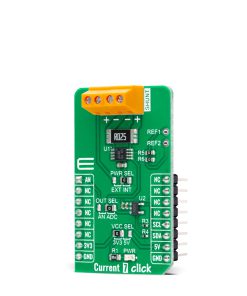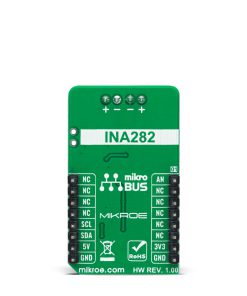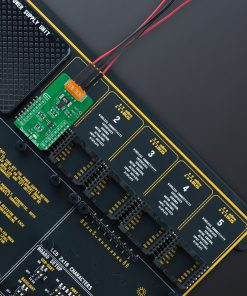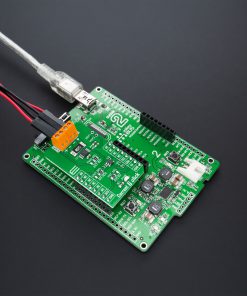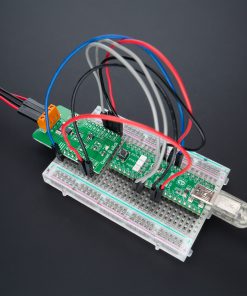Current 7 Click
R570.00 ex. VAT
Current 7 Click is a compact add-on board providing a precise and accurate current sensing solution. This board features the INA282, a wide common-mode range, bidirectional, high-accuracy current shunt monitor from Texas Instruments. The INA282 represents a voltage output current shunt monitor that can sense drops across shunts at common-mode voltages from –14 V to +80 V, independent of the supply voltage, which operates in a range from 2.7V up to 18V supply. The zero-drift topology enables high-precision measurements with maximum input offset voltages as low as 70μV. Also, the user is allowed to process the output signal in analog or digital form. This Click board™ delivers higher performance to industrial control and automation applications, load and power supplies monitoring, telecom equipment, and many more.
Current 7 Click is supported by a mikroSDK compliant library, which includes functions that simplify software development. This Click board™ comes as a fully tested product, ready to be used on a system equipped with the mikroBUS™ socket.
Stock: Lead-time applicable.
| 5+ | R541.50 |
| 10+ | R513.00 |
| 15+ | R484.50 |
| 20+ | R466.26 |

